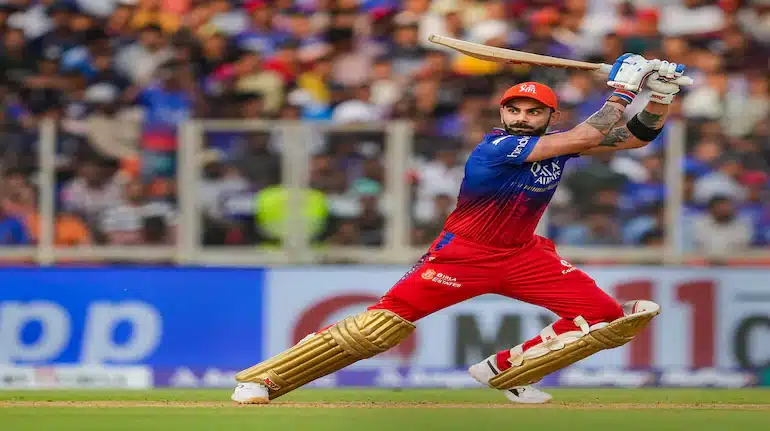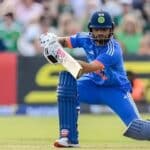Jarrod Kimber
T20 scoring rates are on their way up. But it is a lot more complicated than that.
This is every single season of major T20 competitions that have been running for a long time, with teams sorted by average and strike rate. And there are a few outliers. 2011 in England, what a fun tournament that one must have been. The CPL has two years where the entire competition scored at barely more than run a ball. The curators had won that year. And again England has an outlier in 2010, where batters averaged more than 30. All of these outliers are notable. But really, the one we want to look at is the IPL this year. As of May 1, this is the fastest scoring T20 season ever, and also, the one with the biggest average.
This IPL you cannot get anyone out, and they’re scoring at 1.5 runs per ball for the first time in history.
Welcome to the future, sort of.
These are the major T20 leagues with a combined strike rate over the years. You can see for all the fear and loathing, the climb in scoring rate has always been fairly slow. Despite all the nonsense of bowlers being replaced by robots, they have kept a lid on the scoring well. But there is an upturn. And there should be, the batters, bats and range of players is way bigger, and we aren’t making bigger playing surfaces.
One thing that is interesting is how different tournaments have set patterns. The Blast is particularly unique. No matter what happens, they seem to average between 24 and 26. Most of them also score between 130 and 140. It’s a fast-scoring tournament, but then there are these random outliers. But in 2023, they also saw their quickest scoring year ever.
In the early part of the PSL it was known as a bowler’s league. Many Pakistan quicks and spinners would get picked up for leagues around the world based on the fact that no one could hit them at home. Then stage two started, and suddenly, it’s a batting league. It’s almost like they moved the entire thing from UAE to Pakistan or something. So much so that in 2023, they recorded the then fastest scoring season ever with a strike rate of 144.
The Big Bash is another competition with a tight cluster. While it doesn’t get spoken about much, it is a league where the bowlers have dominated. Not a single season has a strike rate over 135. They only have two years of decent averages, but even they were slow.
That leads into the World Cups. Because in Australia for the last T20 World Cup in 2022, we saw the slowest scoring edition ever, which is quite something considering the last 12 months. Part of that was that they were early-season Australian pitches, and it was also wet. However, Australia is a bowling league, and the patterns usually hold up.
West Indian batters have travelled around the world bashing sixes everywhere, but at home, they play in one of the slowest-scoring leagues. The bowlers dominate here. Pitches are all over the place, but a big part of that is because these are all different countries and islands. Their pitches are naturally the most varied except in scoring rates, where they really do slow you down. This is all more interesting because of course the World Cup is coming up there. In 2023, they did have faster-scoring pitches.
The ICC usually have more balanced and bowler-friendly surfaces. The fastest-scoring World Cup was actually the first one in 2007. That was only a strike rate of 124, so we would expect another slow-scoring edition, even if some of the US wickets might be batting-friendly.
Not since 2009 has the IPL had a bowling year. Look at the IPL vs the tournaments in Australia and the West Indies. Even the more frugal years are on the right side of those competitions. And then we get to 2023, and you see how much more the impact sub has changed batting rates than the Big Bash’s, when they had the X factor and power surge.
To show this all differently, this is the chart of all leagues by year. And this really shows you how low-scoring the World Cups have been: they hang at the bottom all the way through, regardless of era. Even as scoring rates go up, the ICC say, that’s not for us, while the IPL is clearly on an upward curve. You can even see the years Kookaburra reinforced the balls and slowed things down before everyone got used to that and went back to scoring faster.
If you just look at the IPL and World Cups, you realise how different these tournaments are. The IPL this year is a shining star if you love sixes, or the sign of the upcoming apocalypse if you don’t. But the most recent World Cup was a complete contrast. These two tournaments are different in every way. So the question is, will the whack whack slap slap of the 2024 IPL have any impact on the next World Cup.
Without the impact sub artificially elongating batting lineups and the pitches being so flat that Kuldeep Yadav can hit for power, what will the World Cup actually give us? Is this a tipping point, or is it an outlier that will take a long time for anyone to catch up with again, like the 400 Australia-South Africa match in ODIs?
But most importantly, for many of the world’s best players, they are about to go from the greatest batting tournaments ever to a potential sludgefest. What a wonderfully stupid sport this is.




